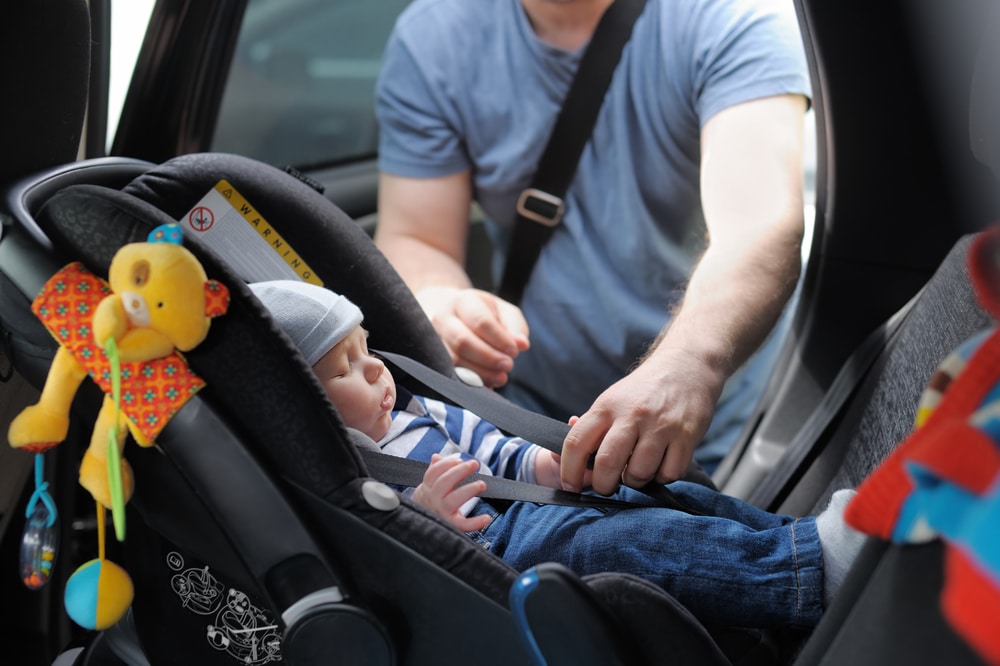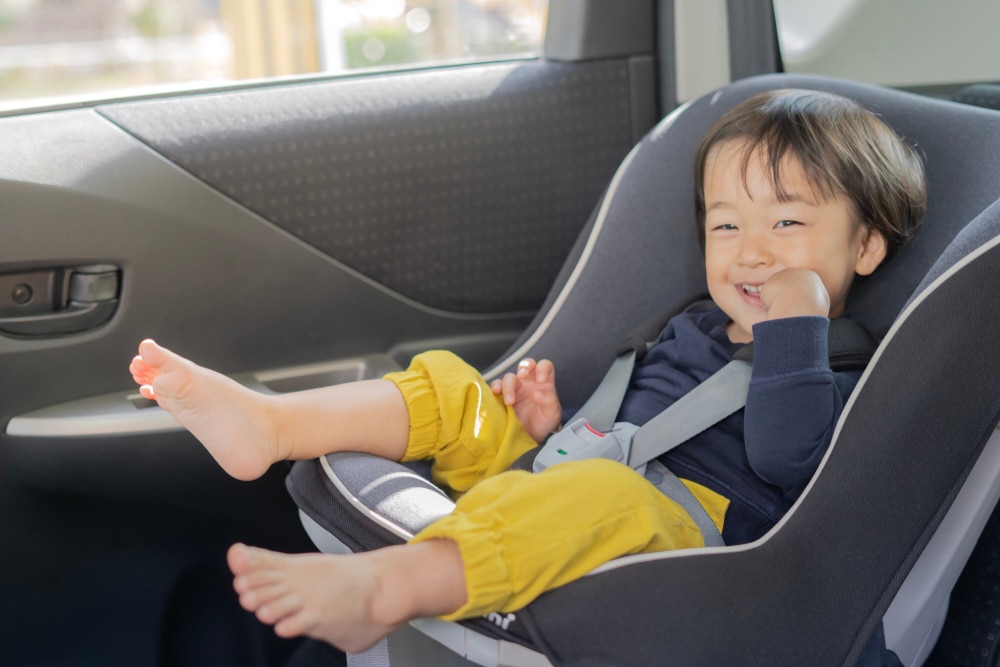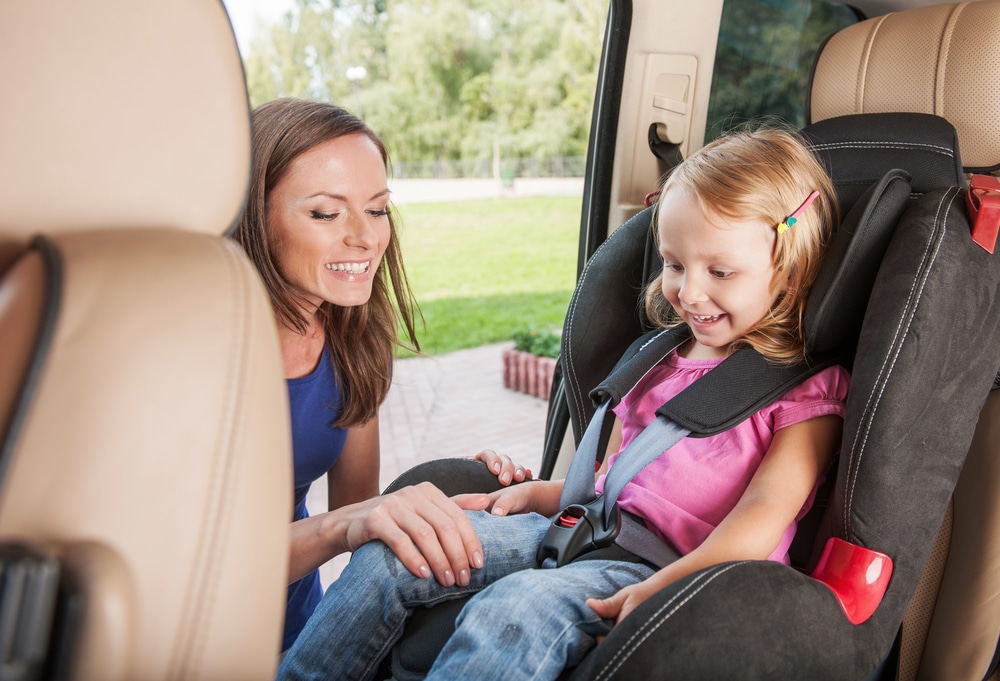It’s critical to understand the various car seat laws in your state, not only to stay compliant with authorities but to ensure absolute safety for your children. Car seat laws in Illinois may vary from other states, so make sure you read on to learn the specifics for the best care for your family.
General Illinois Car Seat Laws
Illinois car seat law dictates that your child must be in a height- and weight-appropriate car seat under the age of 8 years old. These safety laws vary in nuances depending on age and can include differences such as rear-facing, forward-facing, or booster car seats.
Below are the differentiating points among age ranges for IL car seat laws:
- Infancy through 2 years: Children under two years old with a weight of 20 pounds or under must sit securely in a rear-facing car set. In fact, your baby is much safer this way.
- Ages 2 through 4: At this stage, a child can transition to a forward-facing car seat, so long as they meet the manufacturer’s weight and height ratings and are secured in a harness. Children 2 years or younger should remain rear-facing if they do not meet the weight requirements.
- Ages 4 through 8: Children in this age range may remain in a forward-facing car seat, so long as they are within the height and weight limits. Once they have outgrown these established measurements, they can graduate to a booster seat used in combination with a car’s lap and shoulder seat belt.
- Ages 8 through 12: Per Illinois booster seat law, children ages 8 to 12 should remain in a booster seat until they have reached a height that properly fits the car’s shoulder and lap seat belt.
It’s worth it to note that in Illinois, any child who weighs 40+ pounds can sit in the back seat of a vehicle without a booster seat, so long as they are wearing the lap belt. However, many safety experts feel this is a dangerous position – regardless of its legality.
Newborn to 2 Years

More recent Illinois seat belt laws have mandated that all children two years of age or younger are to remain rear-facing. However, the exception to this law is that children two years or younger who weigh over 40 pounds or are more than 40 inches tall may be switched to a forward-facing car seat.
Children who are riding rear-facing in any vehicle must only do so with a specified rear-facing car seat. This entails reading the manufacturer’s guide closely to ensure your car seat is designated towards rear-facing riding.
In terms of rear-facing car seats, there are a few things to keep in mind.
You should never install a rear-facing car seat in front of an active airbag. Should a collision occur and deploy the airbag, your child could take on serious injury.
A child’s head should always be at least 1 inch below the top of the safety seat in a rear-facing car seat. You should also always follow the recline indicator on the product for the utmost safety.
The included harness straps should always be appropriately used when securing a child in a car seat. Read the manufacturer’s instructions carefully to ensure that you are strapping a child in correctly. The hardness slots should be below or at shoulder level for a rear-facing infant. Make sure that the hardness straps are snug, but no too tight that you can’t slide your fingers under them. Adjust the harness clip to armpit level.
Related: Best Portable Toddler Car Seat For 2 Year Old
Ages 2 through 4

Car seat laws in Illinois state that your child should remain rear-facing until the age of 2. However, the safest course of action is to keep them rear-facing for as long as possible. For instance, if your child reaches the age of 2 before meeting the height and weight requirements of a forward-facing car seat, you should keep them rear-facing until they do.
Between these ages, a parent or guardian should use the internal hardness system of a car seat until the upper-most height or weight limit of the car seat is reached. At this point, you should transition to a larger car seat or booster seat.
When facing forward, a child’s straps and harness should sit at or above shoulder level. The harness should remain snug across the body to prevent movement, with the harness clip at armpit level.
Always check to make sure your child has not outgrown the top of the front-facing seat, ensuring there is at least an inch gap between the head and the top.
Related: Best Car Seats for a 3 Year Old Child | What Are The Best Car Seats For 4 Year Olds?
Ages 4 through 8

At the range of ages 4 to 8, a child may either be placed securely in a forward-facing car seat or an appropriately-sized booster seat. This decision is based on your child’s growth and measurements. Always check with the manufacturer’s height and weight limits when making this call.
Once your child has outgrown the largest forward-facing seat and is within this age range, you can legally transition them to a booster seat. Always use a booster seat in tangent with your vehicle’s lap and shoulder belt – never just the lap belt.
Proper placement of the lap and shoulder seat belt should go as follows: a lap belt needs to always lie across the upper thighs as opposed to across the stomach when in a booster seat. Likewise, the shoulder belt should rest across the shoulder and the chest of your child – not near or on their neck or face.
A proper booster seat should not allow the top of your child’s ear to be above the back of the seat. If you’re using a booster seat that does not have a back, make sure the headrest is in the right position to support your child’s head.
Ages 8 through 12

At this final stage, you can judge your child’s needs based solely on their growth. All children in this age range should continue using a booster seat until they have reached a height that allows them to correctly use an adult lap and shoulder seat belt.
The right fitting for an adult car seat belt involves the lap belt lays across the upper thighs and not the stomach, without a booster seat. Sans booster seat, the shoulder belt needs to sit across the chest and shoulders with a snug hold.
If a seat belt hits or rests on a child’s neck or face, he or she is not yet tall enough to use an adult seat belt without a booster seat.
A child is tall enough to get rid of the booster seat once their knees bend over the front of the seat and their feet sit flat on the floor, and their back and hips rest flat against the back of the seat.
Other Requirements
While using any kind of rear-facing, forward-facing, or booster car seat, you should never implement a product that is more than six years old or has surpassed the expiration date. Even after graduating from a booster seat to the regular car seat, a child should remain in the back of the car until the age of 13.
You can schedule to have your car seat situation inspected by a professional to make sure your child is using the appropriate seat, installation is correct, and the seat is safe by visiting this form.






